The Winterberry hollies (Ilex verticillata, below, several weeks ago) are bare, typical for this early week in December. I’m uncertain if birds consume the majority, or if they just fall to the ground. Berries are never so abundant that I would see accumulations in the ground clutter, but I’ll presume these do some good by feeding the birds.
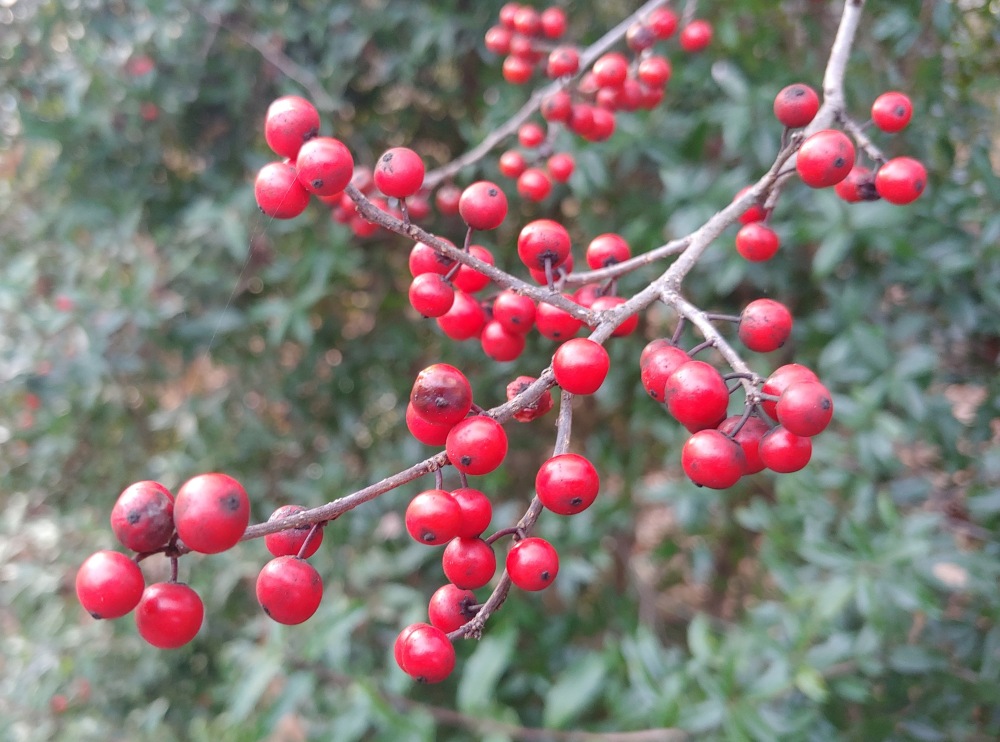
The more abundant berries of most of the evergreen hollies are eaten slowly, mostly by robins in late winter, though unusually I’ve seen robins in recent weeks. When the robins come, usually in early March, there are a bunch of them.
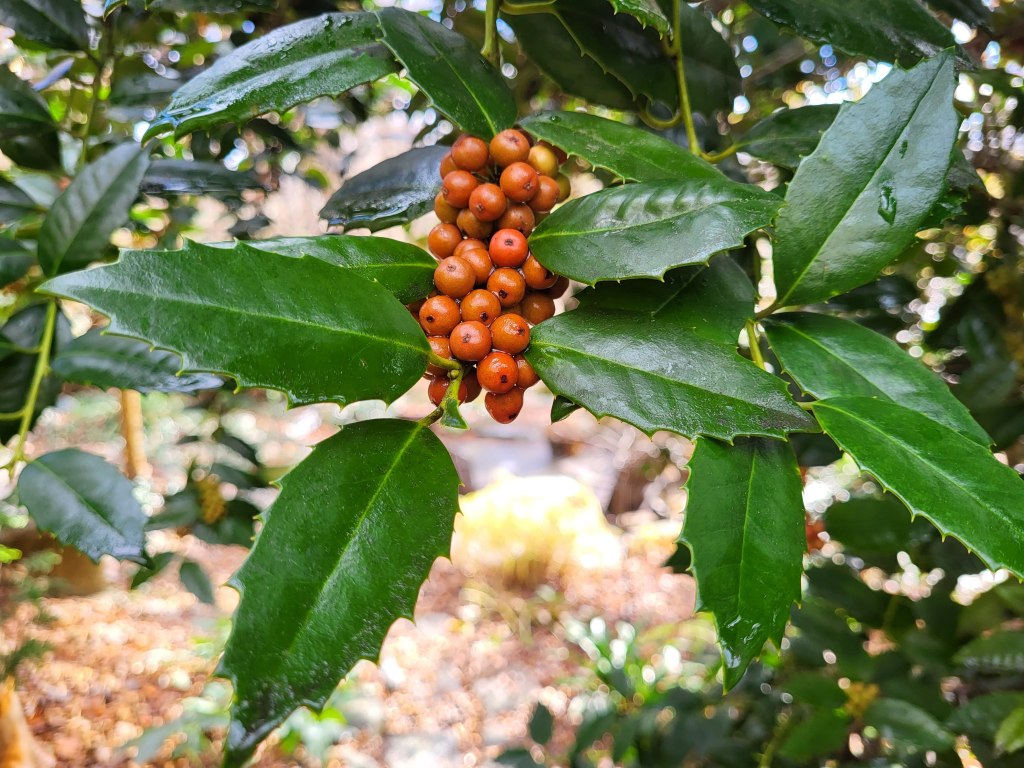
While only one of the handfuls of native American holly (Ilex opaca, below) in the garden is a confirmed female (with berries), I suspect that some younger plants will be revealed as female as they gain a few more years. All are native seedlings that are cultivated at the garden’s edge, with the single, twenty foot tall female nestled beside much taller Japanese cedars (Cryptomeria japonica ‘Sekkan sugi’).


For whatever reason, I do not get berries on the Oakleaf holly (above), a medium green leafed holly with a slightly more upright form than other evergreen hollies. Oakleaf has been supplanted in recent years by Oakland holly, a nearly identical holly with denser branching that is more ideal for nursery growers. The differences are indistinguishable in the home garden unless the gardener is madly irrigating and fertilizing. In any case, an Oakleaf holly listed for sale today is likely to truly be Oakland, but the matter of one versus the other is irrelevant and I only want to know why my Oakleaf does not ever get berries while other hollies in close proximity are loaded.
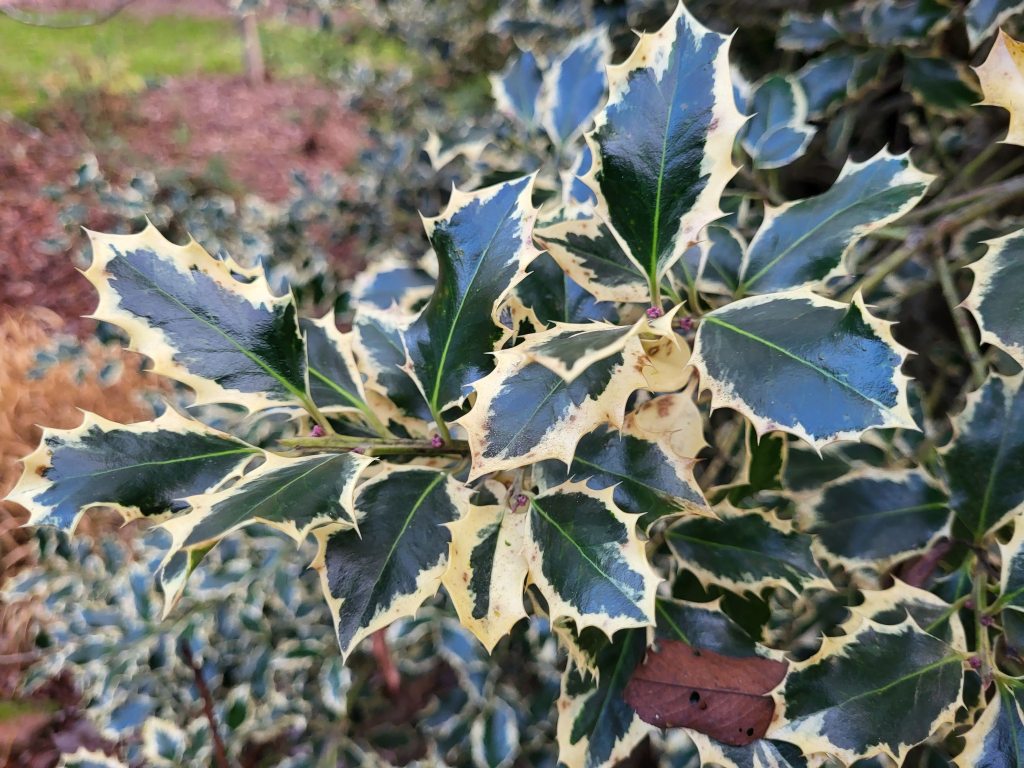
The variegated English holly (Ilex aquifolium ‘Argenteo Marginata’, above) has never had berries. While other female hollies can produce some berries without a male pollinator, I suspect the variegated English flowers when other hollies are not. Still, its variegated foliage is a glorious backdrop, though in a curiously unplanned combination the holly is beside a variegated ‘Butterfly’ Japanese maple and variegated ‘Goshiki’ osmanthus. I rarely notice.
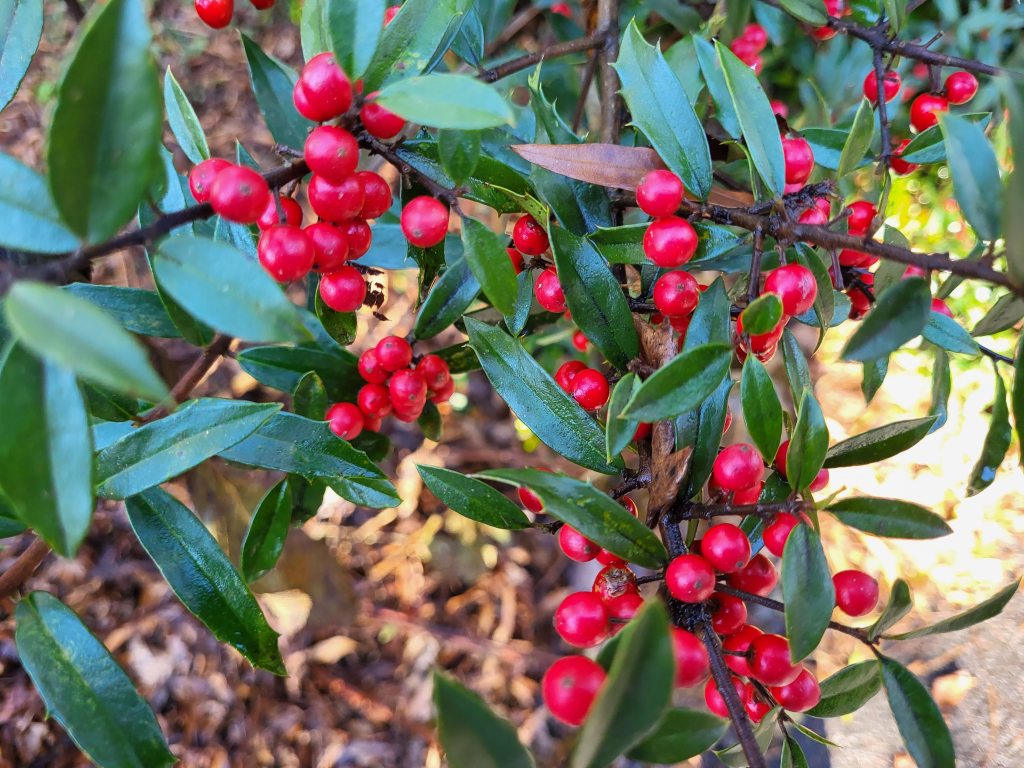
In recent years, the ‘Dixie Star’ holly has begun to produce berries as it finally peaks into daylight from beneath a wide spreading ‘Jane’ magnolia. This holly was introduced years ago as a possible improvement to ‘Foster’s #2’ (Ilex x attenuata ‘Fosteri’), though it didn’t catch on. ‘Foster’s’ is still around, but it had a nasty habit of dropping many leaves after transplanting in the spring, so it has largely been replaced by some of the hollies below. All dependably produce heavy crops of red berries that persist through the winter.
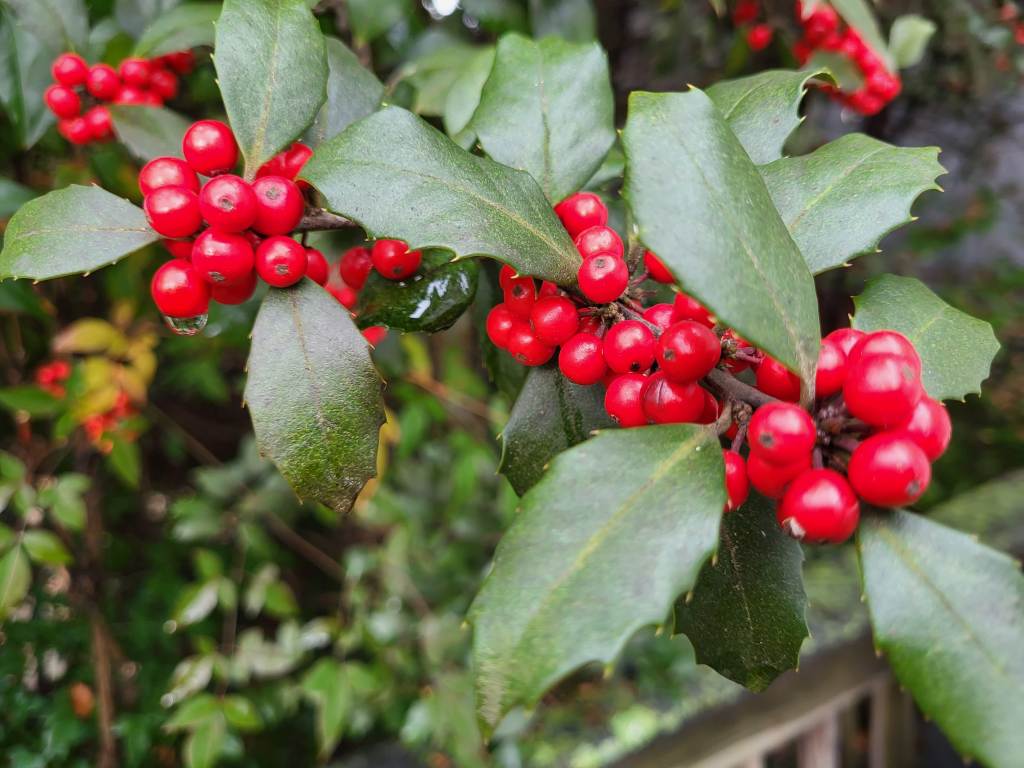
Are multiple varieties of holly necessary in a garden? Of course not. The thirty plus Japanese maples in the garden are also not required, but if not one of everything as I sometimes state, I must have at least one of many.

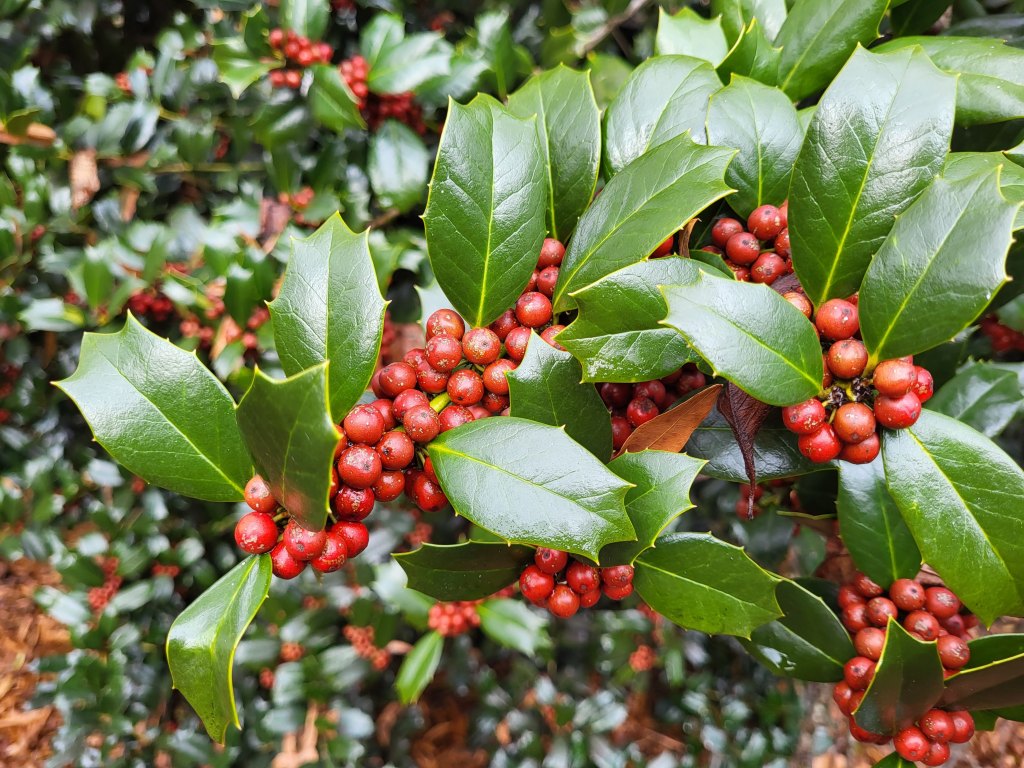

I’m thinking of planting one or more Hollies as a screen between us and the house behind us. I’ve read that Nellie Stevens is by far the fastest grower. Has that been your experience?
American holly is by far the slowest, but all the other hollies are comparable. Nellie Stevens is the most readily available, and a superb holly.
Sadly I will not be able to plant evergreen hollies in my new garden in Nova Scotia! So I will have to plant only deciduous species/cultivars! Do you know which are the most prolific selections? Thanks, Michael Dodge
Sent from my iPad
>
I’ve planted ‘Winter Red’, ‘Sparkleberry’, ‘Red Sprite’ and a few yellow berried hollies. I don’t recall the males. ‘Sparkleberry’ gets the most sun, so it is exposed to more pollinators. In more shade, the cultivar doesn’t seem to matter. Berries are much less abundant. I haven’t planted newer introductions that promise more berries, but seeing samples I’d guess the berry set is greater.
Thanks for the info Dave! We have mostly sunny exposure, so we should be able to get a colourful display! Michael
>